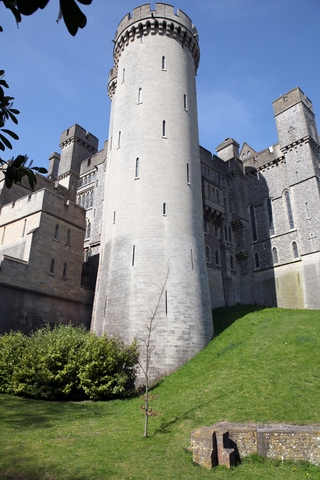
The Castle of Otranto

Every October I participate in a common read of the Supernatural Fiction Readers over at Goodreads. The group selection this time is The Castle of Otranto by Horace Walpole. We have been having a super lively discussion of this supernatural classic. Check out the discussion here. And great news! You can read The Castle of Otranto for free here on Gutenberg.
The Castle of Otranto is supernatural lite, the paranormal elements consisting primarily of a giant helmet and a haunted painting. The claim to fame for this novel published in 1764 is that it ushered in the Gothic literary tradition. The Castle of Otranto focuses primarily on an evil, power-hungry prince named Manfred and his unfortunate, browbeaten family. The book opens with the death of Manfred’s son on the day of his arranged wedding followed by Manfred’s desire to force his son’s fiancée into marriage with him. A chase ensues–Manfred in hot pursuit of the virtuous, determined Isabella–followed by alliances, machinations, and betrayals of family members, servants, clergy, and claimants to the castle. Your basic wild ride.
Much of our Goodreads discussion examined Walpole’s (lack of) character development. Some of us felt that the characters, particularly the women, were one-dimensional stand-ins. My sense is that Walpole intended The Castle of Otranto as a treatise on patriarchy and Christianity. While writers often pair Christianity with patriarchy, Walpole subverts one to serve the other. Princess Hippolita, I’m talking about you. Hippolita is depicted as an angel-saint perpetually virtuous, kind, gentle. But she obeys her husband and promotes patriarchy even to the point of condoning evil–evil against vulnerable young people an angel-saint would be rightly expected to protect. I don’t know about 18th century folks, but today the notion that “I was only following orders” does not an excuse make. So fie on you, Hippolita!
Methinks I sound a trifle harsh, which means I’d best mention some things I liked. I liked the fact that I read the book. Yay, me. I liked the plot’s wild ride. One complication and mistaken identity after another were quite fun. My heart pounded during the crazy chase through castle rooms and secret chambers. I enjoyed finding Walpole’s nods to Shakespeare like the air-head maidservant, hubristic priest (is that a word?) and blockhead guards. Also, as Shakespeare sometimes did,* Walpole invented a word. I didn’t know this until a supernatural fiction reader, RJ, pointed out that the word blockheads came from Walpole. (Thank you, RJ, for bringing that totally cool word to my attention.)
Mark Twain once said, “A classic is something everyone wants to have read but nobody wants to read.” Twain clearly had me in mind. I wanted to have read The Castle of Otranto, but I doubt I would have done so without the motivation of the Supernatural Fiction Readers group (thank you, group!). And I would have missed out on an important classic, a classic that inspired future Gothic masterworks such as Frankenstein and Dracula. Here’s some irony for you: Walpole called Mary Wollstonecraft, who dared to write A Vindication on the Rights of Women, “a hyena in petticoats.” Um, no. And who was Wollstonecraft’s daughter? Mary Shelley who wrote the aforementioned Gothic classic Frankenstein. Ha!
I give points to Walpole and The Castle of Otranto for heralding the rich Gothic tradition of writing that came after and for inventing the stellar word blockheads. And I give points to myself for finishing this important classic (despite, at times, wanting to throw it against the wall). But I taketh away points for two-dimensional characters, underdeveloped story, and a suffocating patriarchal agenda difficult even for women of his own time to swallow. ( Waving at you, Mary Wollstonecraft!)
Readers, what are some Gothic novels or stories you enjoyed? Have you read The Castle of Otranto? What did you think?